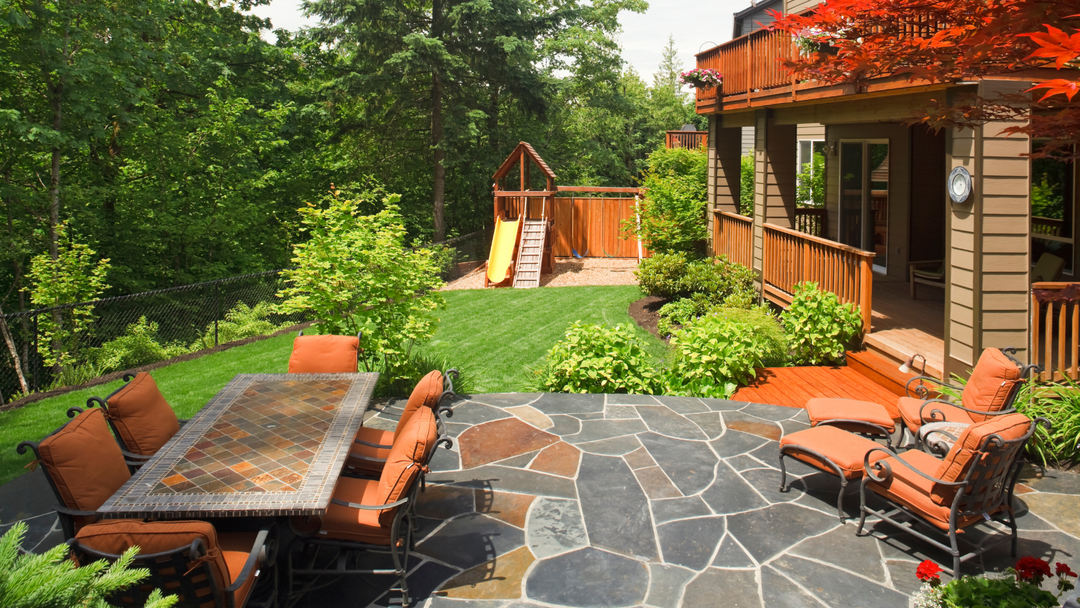Preventing Winter Damage to Your Deck
After months of hosting barbecues, parties and lounging in the sun, the last thing you want is for your beautiful deck to come out of winter looking worn and weathered. While it may seem low maintenance, your deck needs proper care and attention during the colder months to prevent cracks, rotting, warping and other seasonal damage. Follow these tips to help your deck make it through winter unscathed.
Protect Against Freeze/Thaw Cycles
One of the hardest elements for your deck to withstand during the winter is the constant cycle of freezing and thawing. During the day as temperatures warm up, melted snow seeps into the wood, then freezes again overnight as temperatures drop. This repetitive expanding and contracting of the wood fibers leads to cracking and splintering of the deck boards.
You can minimize this type of deterioration by sealing your deck with an oil-based sealer before winter arrives. The sealer penetrates deep into the wood grain to make boards more pliable and resistant to movement. Also make sure to seal any existing cracks with a clear caulk designed for decks. This keeps water from seeping in and widening cracks during freeze/thaw cycles.
Additionally, try to avoid shoveling or clearing snow off the deck during extended freezing periods. Letting snow accumulate actually insulates and protects the deck from dramatic temperature fluctuations. And be sure to allow ice and snow to naturally melt rather than chopping or picking away at it which can damage deck boards.
Prevent Damage from Heavy Snow
It’s not uncommon for decks to buckle or sag under the immense weight of heavy, wet snow. This is particularly an issue with elevated decks and those built with insufficient support beams. To prevent snow from overburdening your deck, keep up with removing it before it gets too deep. Use a soft bristle broom to sweep off light accumulations. For heavier amounts, a push broom is more effective.
When shoveling, use a plastic shovel without sharp edges that could scratch or nick your deck boards. Make sure to shovel in the direction of the floorboards to avoid catching an edge and ripping up sections. Don’t let snow pile up against doors or windows where the added weight can cause damage. And take extra care when clearing snow from railings, steps and around posts.
For really heavy snow, carefully apply calcium chloride or rock salt to melt the snow, then rinse the residue off thoroughly when done. This prevents chemical buildup that could discolor or corrode the deck.
Avoid Ice Dams
When snow on the roof begins to melt and refreeze at the eaves, it creates a dam that blocks water from draining properly. This water backup then leaks through nail holes and other openings, dripping down onto your deck. The moisture gets trapped between the deck boards and causes rotting, mold and decay over time.
To prevent ice dams, keep gutters and downspouts clear of debris so melted snow can run off. Install heat tape along the roof edge and overhangs to encourage proper drainage. Avoid excessive shoveling right up against the house which brings warmth from the house exterior and melts upper level snow.
If ice dams do form, hire a professional to safely remove them rather than attempting to chop or hack away yourself. This prevents damage to the roof or siding. A few remedies include steam, special heating coils and calcium chloride applications.
Stop Water Seepage & Rotting
Beyond ice dams, routine winter precipitation means your deck endures months of exposure to moisture. Proper drainage is key to prevent puddles and water seepage through cracks that leads to rotting and decay. Make sure your deck is graded with a slight slope so water readily runs off. Check the drainage around posts, foundations and hardware to prevent pooling.
Before the first freeze, thoroughly clean your deck to remove accumulated dirt, leaves and debris that blocks drainage. Then re-stain or seal the entire deck with Fence Armor Expert Stain and Seal to waterproof the wood before winter sets in. Pay special attention to protecting wood end grain which soaks up moisture easily.

Despite your best efforts, check for any signs of water spots, soft spongy sections or mildew growth which indicate rotting wood. Make repairs immediately before the damage spreads. Cut away the affected wood and install new pressure-treated lumber, matching the existing structure. Apply wood filler and fresh stain to restore the look.
With frequent snow, rain and ice, proper ventilation is also crucial to allow your deck to dry out between winter precipitation. Make sure there is adequate air flow and space between deck boards. Avoid closing up the deck perimeter tightly with skirting or latticework.
Conclusion
While it requires some diligence, taking preventative steps will save your deck from the ravaging effects of winter weather. Sealing cracks, clearing snow promptly, preventing ice dams and ensuring proper drainage will help your deck make it through the winter months unscathed. Come springtime, you’ll be thankful you invested the effort into proper care and maintenance.
With a few simple precautions, you can still enjoy your outdoor living space during the cooler seasons. Add a firepit, heater, windscreen and cozy furniture to create a wonderful winter oasis. Your deck will be ready for parties, playtime and relaxation again when sunny skies return next season.















